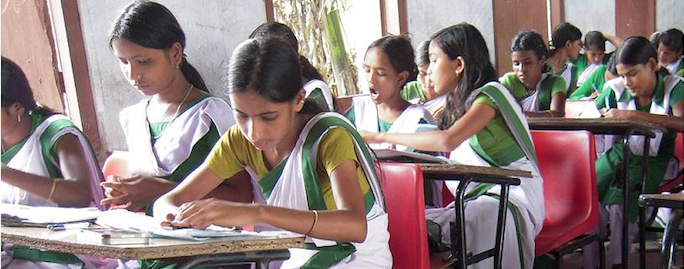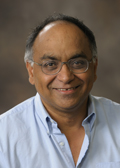The election campaign in India has well and truly begun, and one only needs to listen to the lunchtime conversations of teachers from Pune to Mumbai to get a feel for their concerns. Strangely absent from these conversations however is any talk of policy, as I discovered on a recent trip to the region. Mostly, the teachers talked about the ways in which the three main parties were positioning themselves.
This started in early January with Rahul Gandhi's speech at the All India Congress Committee meeting in New Delhi, in which he called for greater participation by women in the Indian political process.
Two days later, it was Narendra Modi's turn, leading a scathing attack on the failures of the UPA government and the Congress's politics of dynasty, calling for more rapid development across the country and highlighting the importance of ‘good governance’.
And while Gandhi and Modi spoke, there was political tamasha taking place in the capital, with the Chief Minister, Arvind Kejriwal, taking to the streets to protest against police officers’ refusal to follow the orders of his administration.
For teachers, all this was a source of great mirth, reflecting a level of embarrassment and cynicism about the politics in India. The two major speeches had failed to encourage any policy debates, and certainly not on the parlous state of education in India.
To be fair, Modi did speak about skills development; he favoured the spread of specialised educational institutes such as the Indian Institutes of Technology (IITs), Indian Institutes of Management (IIMs) and the All India Institute of Medical Sciences to the country's major towns and cities.
This is a rhetorical line Modi has been pushing for quite some time. Yet he said almost nothing about how his government might pursue a skills agenda. Nor did he make clear how his plan to establish more IITs and IIMs is different from the policy pursued by the current Government, which has created a number of these and sought to improve working conditions in India's public universities.
Through its programs of affirmative action, the current Government has also promoted a range of equity measures, such as loosening the regulatory environment for private universities to emerge, as they have done in large numbers.
However the main problem facing the higher education system remains quality. While some private universities are well resourced and governed, many others are not. Parents and students continue to make large investments in education, with dubious outcomes, in both educational and employment terms.
Greater access and equity has not guaranteed effective educational quality. There is a serious shortage of well-qualified and professionally trained faculty, committed to their disciplines and the students they teach. So the promise to create new IITs and IIMs is not an effective policy solution.

If the problems with Indian system of higher education are serious, they are overwhelming in the schools sector. The quality of instruction in most Indian schools, especially that located in rural areas, is disappointingly poor and is perhaps even declining.
According to the recently released Annual Status of Education Report for 2013, published by Pratham, 50 per cent of students in Classes III to V cannot do basic arithmetic. Among all students in class III, only 40.2 per cent are able to read at Class I level.
This is, of course, not surprising. The Ministry of Human Resource Development's own report on the Right to Education Act (RTE) states that 20 per cent of the schools do not have qualified teachers. Teachers are poorly prepared and are provided very little in the way of professional development. In many schools, corrupt governance practices are rife, especially those associated with the midday meals plan.
Yet despite this the country is well on its way to meeting its MDG targets: participation rates in primary schools have almost doubled, as have the literacy rates, now alleged to be over 85% since the launch of National Literacy Mission in 1989.
The disparity between boys and girls has also narrowed. The RTE has rightly been celebrated as a major (if long overdue) achievement, enhancing educational opportunities to all sections of the Indian community. But as significant as these achievements are, so far it has not produced the educational outcomes to which it aspires.
A serious policy debate is required about the enormous challenges facing India’s system of education.
A serious policy debate is required about the enormous challenges facing India’s system of education. Issues such as the professionalisation of teachers, better student-teacher ratios, greater accountability in state schools and better oversight over private schools need to be covered, so does, most importantly, a greater emphasis on quality so that returns on education do not continue to disappoint parents.
At the level of higher education, there needs to be greater emphasis on research and development if India is to thrive in the global knowledge economy. Indian authorities have done much in recent years to loosen the bureaucratic rigidities facing its universities, and this process needs to continue.
An election campaign that promises to define India's future in almost every conceivable way is an opportunity for both politicians and the public at large to debate issues of educational futures vigorously. The political class in India must not miss this opportunity.


